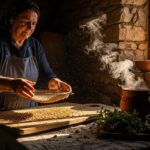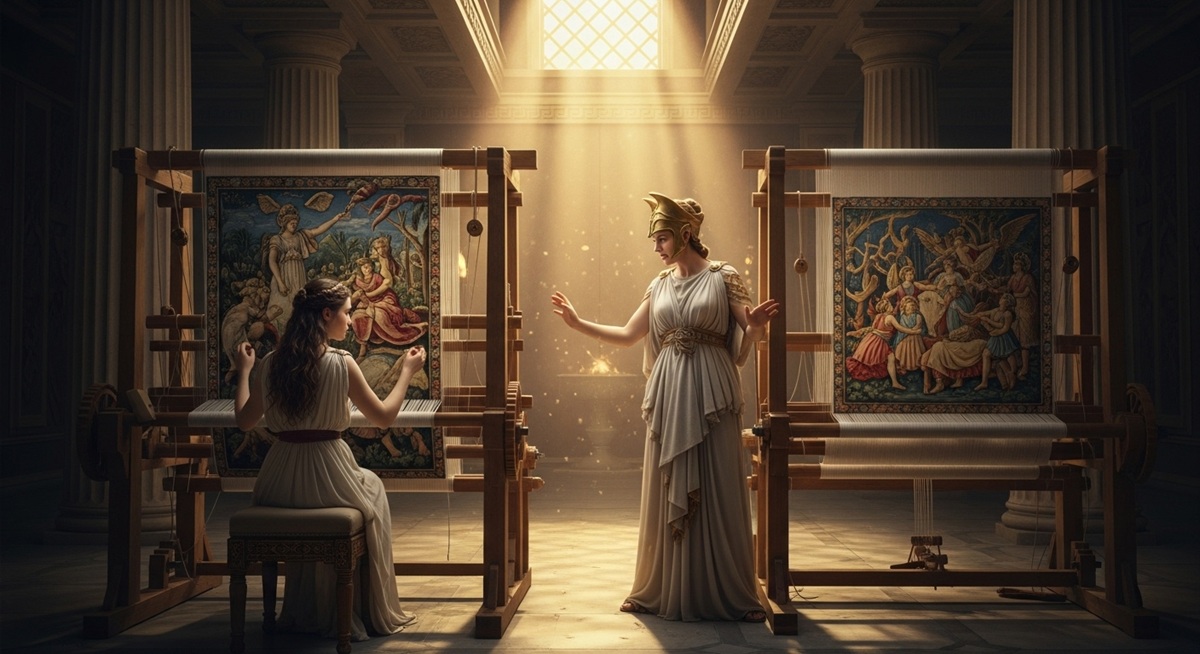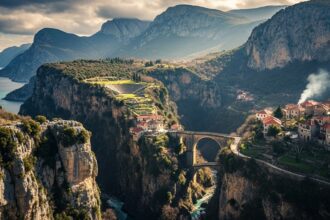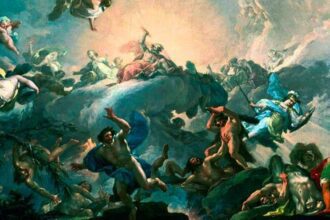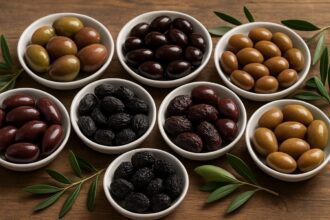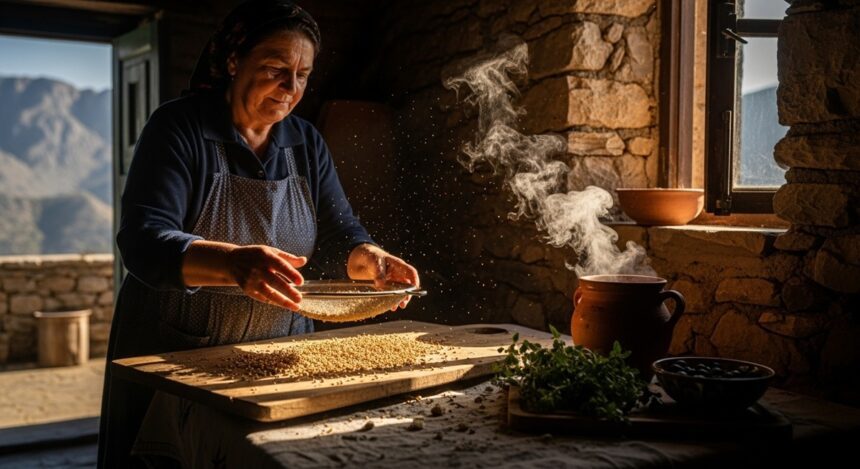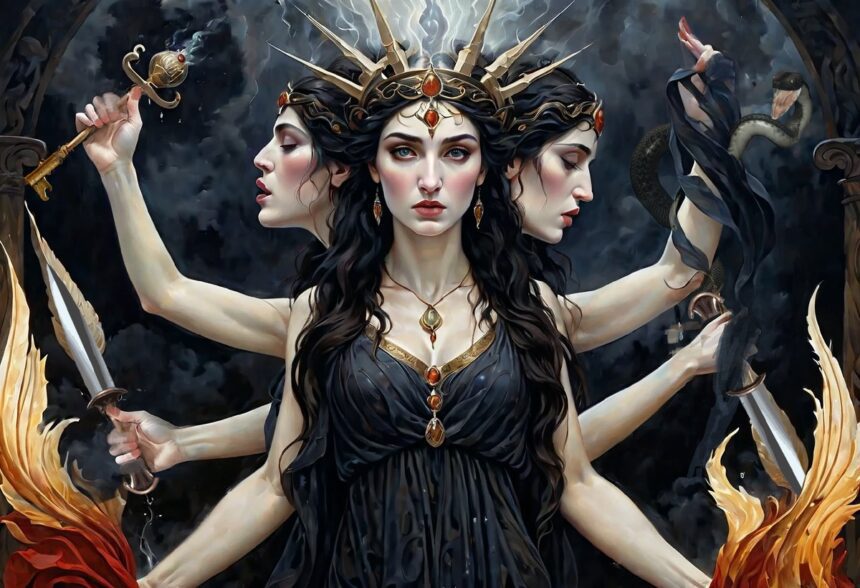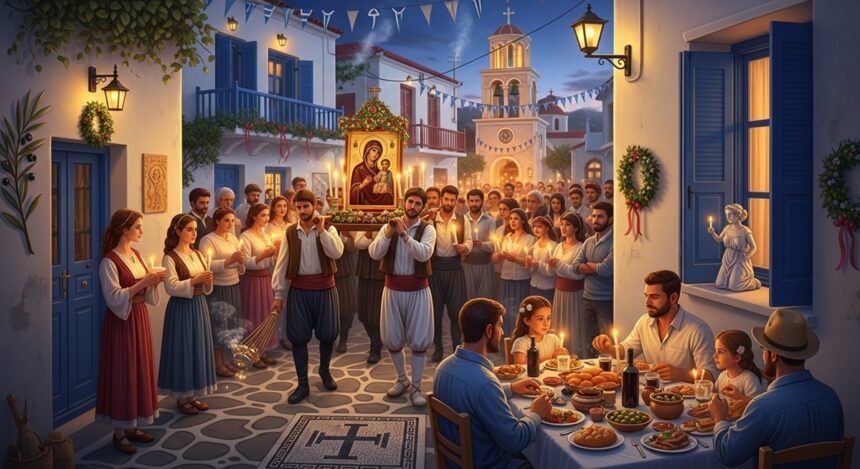In the heart of ancient Greek mythology, few stories shimmer with as much complexity and poignancy as the myth of Arachne—the mortal woman who dared to challenge Athena, the powerful goddess of wisdom and craft. Her profound tale is a timeless narrative about the nature of art, transformation, and the eternal power of creation itself.
From the renowned looms of ancient Lydia to the threads that now stretch into modern Greece’s craft traditions, Arachne’s legacy weaves its way through time. Her myth still powerfully speaks to every artist, weaver, and dreamer who sees in their meticulous work something sacred—the profound, defiant act of creating beauty itself.
A Mortal Weaver and a Goddess of Wisdom
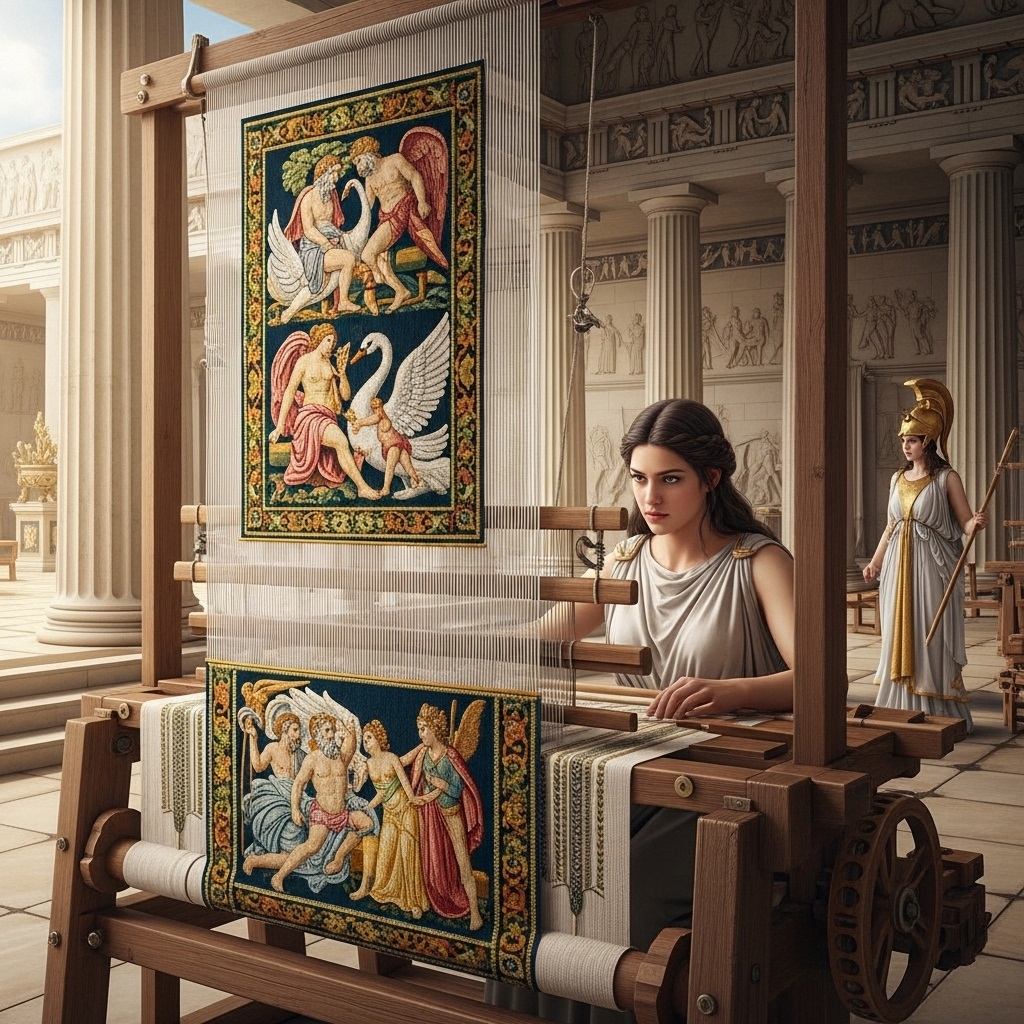
In the golden age of Greek legend, Arachne was said to be a young woman from Lydia, famed throughout the ancient world for her miraculous, innate skill with the loom. Her tapestries were legendary: so intricate, so vivid, and so lifelike that even the nymphs themselves reportedly left their rivers and forests just to watch her weave.
But admiration, as it often does in tragedy, turned swiftly to dangerous hubris. When praised for her seemingly divine talent, Arachne contemptuously dismissed the idea that the goddess Athena had anything to do with her gift. “I taught myself,” she said proudly, the words heavy with challenge. “Let Athena herself come and weave against me, if she dares.”
The goddess heard her defiance.
The Contest: Mortal Craft vs. Divine Power
Athena, initially appearing disguised as a frail old woman, approached Arachne to offer a gentle warning. “Child,” she advised, “speak humbly. No mortal can truly equal a goddess.” But Arachne’s pride was utterly unshaken. “If she thinks herself my better, let her prove it.”
At that precise moment, Athena shed her disguise, revealing her true form—radiant, terrible, and undeniably divine. Two looms were immediately set side by side, and a contest began that would ultimately decide the fate of art, pride, and the very boundary between humanity and the gods.
Athena’s tapestry was magnificent: it showed the gods in all their glory, with Zeus ruling majestically from Olympus, and scenes of mortals inevitably punished for daring to defy the divine will. But Arachne’s tapestry was flawless—perhaps, tragically, too flawless. She wove powerful, truthful scenes of the gods’ loves and scandals, depicting moments of their vanity, deceit, and passion. Her work was not only technically perfect and stunningly beautiful; it was brutally honest. When Athena saw it, she was struck by its breathtaking perfection—and simultaneously enraged by its defiant truth.
The Transformation: From Artist to Arachnid
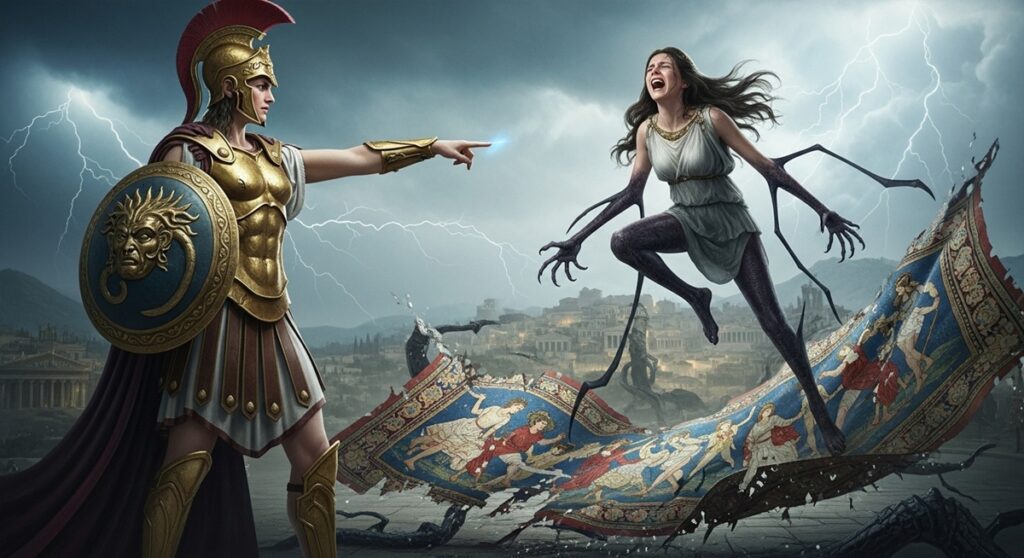
Unable to find a single flaw in Arachne’s craft—the highest possible compliment, and the source of the goddess’s shame—Athena furiously tore the magnificent tapestry to shreds. Arachne, utterly devastated by the destruction of her life’s work, attempted to take her own life.
But the goddess intervened with a twisted form of mercy.
“You shall live,” Athena declared, “but hang forever from your thread—and weave for eternity.”
With those chilling words, she transformed the young girl into the first spider, her hands and limbs turning into spindly legs, her body shrinking into a creature destined to spin silk forever. Thus was born the spider’s web—a fragile, shimmering tapestry of geometry and patience, forever suspended between the earth and the sky, forever a monument to divine punishment and mortal genius.
Threads Across Time: Arachne’s Legacy in Greek Thought
Though tragic, the myth of Arachne is also one of profound transformation and endurance. In her very act of defiance, Arachne became something eternal—a powerful symbol of the creative will that no god could truly extinguish.
In Greek philosophy, this potent myth found deep resonance. The loom and thread became powerful symbols of fate (the Moirai, or Fates, were themselves divine weavers), while the intricate act of weaving represented the creation of the cosmos—the ordering of chaos into recognizable beauty. Even Plato famously used the metaphor of weaving in his dialogues, describing the ideal life as a careful balance of threads: intellect and emotion, virtue and pleasure, all skillfully woven into a perfect social harmony.
And so, while Athena’s punishment was designed to utterly humble Arachne, it ironically immortalized her artistry. The spider’s web, delicate yet enduring, became a subtle, constant monument to human creativity itself, defying the goddess with every newly spun thread.
The Weavers of Greece: From Myth to Modern Craft
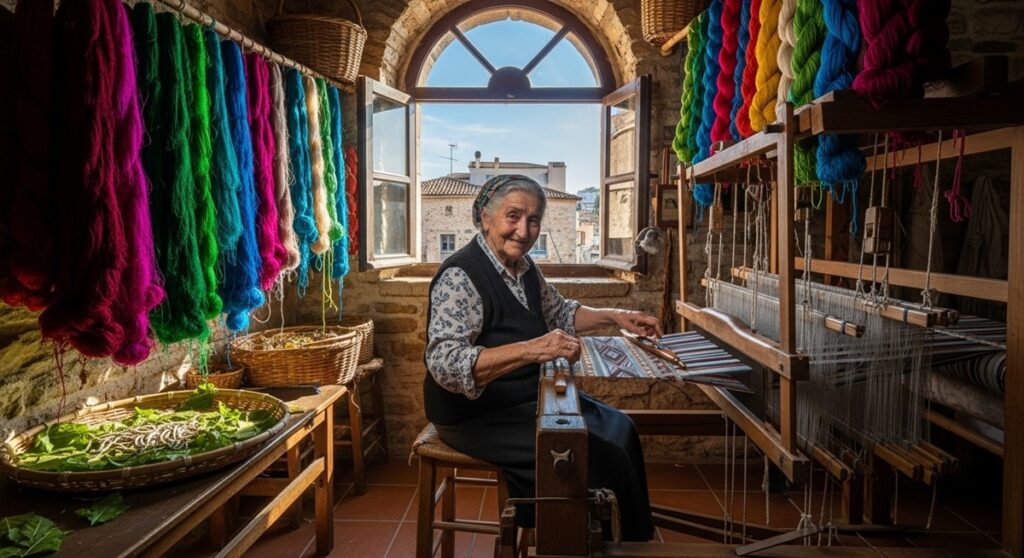
Traveling through Greece today, the discerning traveler can still find Arachne’s descendants—not in myth, but in the dedicated loom artisans who carry forward her extraordinary legacy of skill and passion. These traditional craft hubs offer an authentic Greek experience that connects directly to the ancient mythology.
Soufli – The Silk of the North
In Soufli, near the Turkish border, silk production has flourished continuously since Byzantine times. Here, visitors can witness the process firsthand, watching silkworms spin their precious cocoons, walking through historic workshops, and seeing the luminous silk fabrics that have made this region Greece’s own definitive “city of threads.” It is a testament to the endurance of human skill.
Crete – The Island of Looms
In the mountain villages of Anogeia and Kritsa on Crete, traditional Cretan weaving continues with immense pride. Women sit before sturdy wooden looms, meticulously creating geometric patterns that beautifully echo ancient Minoan art. Each rug, shawl, or tapestry carries something of Arachne’s spirit—precision, patience, and the act of manifesting divine beauty in motion.
Meteora – Threads Between Heaven and Earth
Even high in the almost inaccessible monasteries of Meteora, monks and nuns still practice weaving as a deeply meditative, spiritual act. Each knot and thread is a prayer, a rhythmic conversation between the hands and the spirit—the very essence of mindful creation. The craft traditions here reinforce the sacred nature of Arachne’s initial gift.
Arachne’s Lesson: The Power and Peril of Creation
What makes the myth of Arachne so enduring and compelling is its central paradox. It is fundamentally a story of punishment and divine retribution, yet it simultaneously offers the highest possible celebration of artistic genius. Arachne’s fall was tragic, but her defiant spirit bequeathed to humanity an invaluable gift: the sheer courage to create even in the face of the gods’ jealous disapproval.
The myth reminds every artist that art—like life itself—must find a difficult balance between humility and unbridled passion. To weave is to take part in the act of creation itself, and to risk, as Arachne did, touching the sacred, untouchable realm of the divine. When modern travelers explore Greece’s craft villages, when they see dedicated hands spinning silk or skilled fingers tracing intricate geometric patterns, they are witnessing echoes of that same mythic defiance—the vital, eternal thread of human creativity.
The web lives on.



